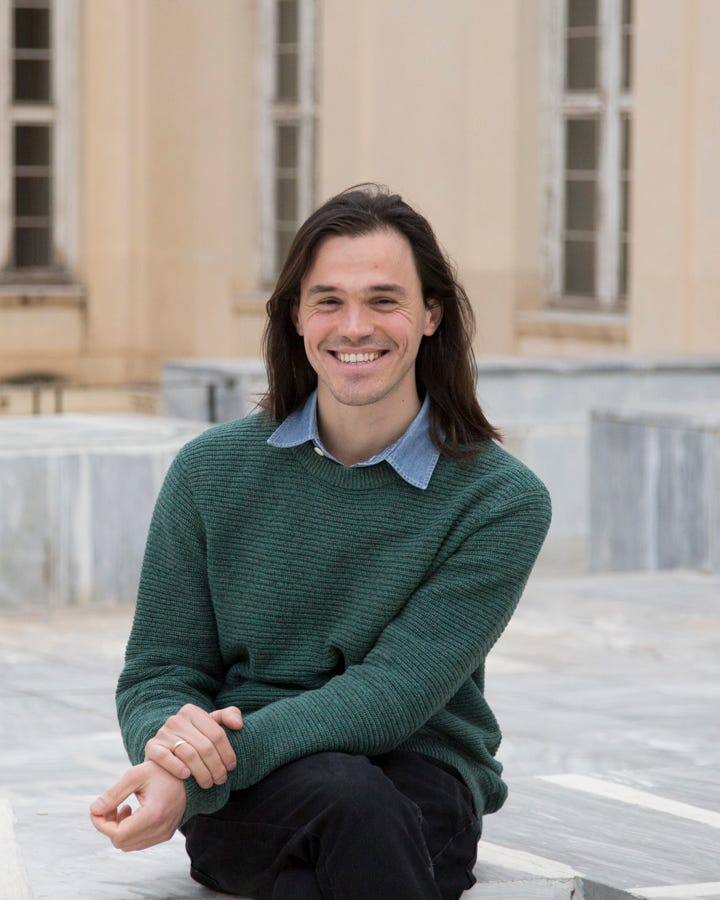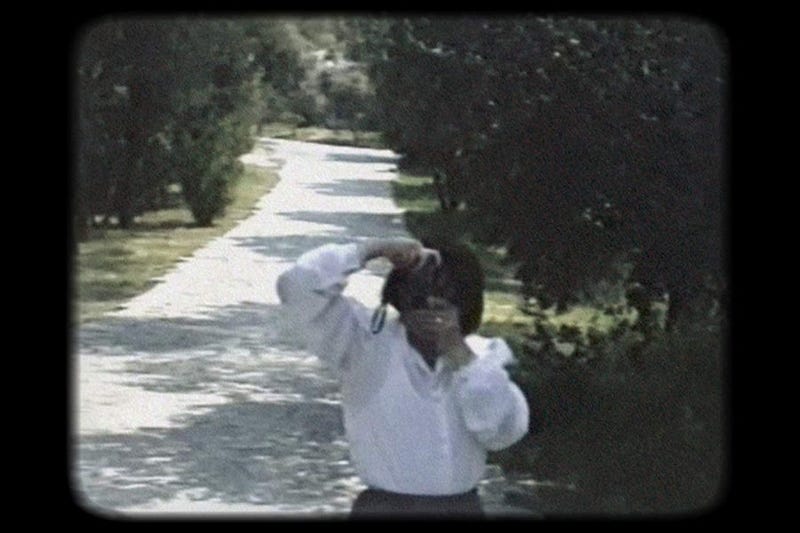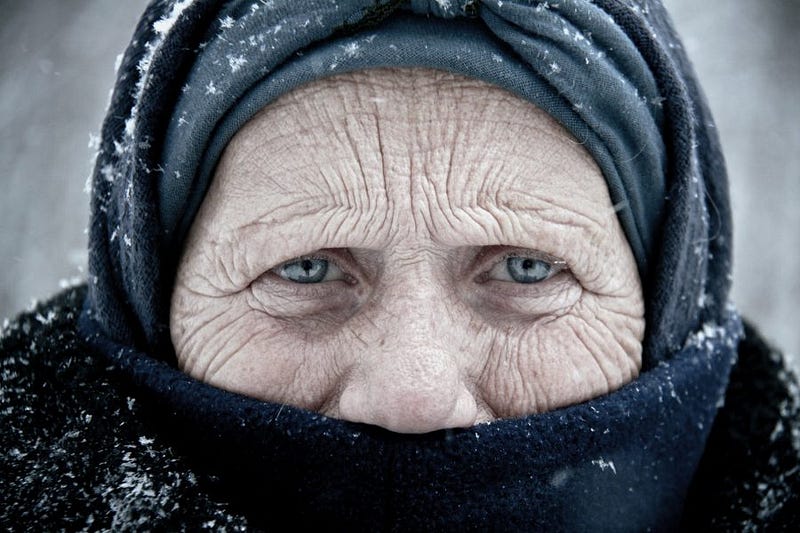08.10.2019
Distance, Possession, and Love: Neritan Zinxhiria’s Life in Cinema
Moving image

At the start of one of Athens’ major summer exhibitions — “The Same River Twice,” co-organized by The New Museum and DESTE and held at the Benaki Museum — we find a beautiful short film by the artist Neritan Zinxhiria. Amidst a wide range of contemporary art pieces, ranging from the plainly documentary to the utterly abstract, Neritan’s film is something else entirely: direct, emotional, and straight from the heart. A Country of Two tells the love story of Neritan’s parents and how their personal journey intertwined with the fall of Albania’s Communist regime in 1990. As Neritan describes, “My parents, Shpetim and Fatbardha, walked the distance from Albania to Greece to live their love.” Twenty-five years later, Neritan reversed the journey, travelling from his adopted home of Greece back to his birthplace, and documented what he saw along the way. In the film, Neritan’s parents narrate their own story while a variety of images appear on the screen: found footage from 1990s Athens, home videos from Neritan’s youth, abstract shots of nature collected on the road between the two countries. Neritan’s retelling of his parents’ story has two anchor points: an opening scene where Neritan’s parents enter a completely empty cinema and take their places to take in the film which will follow, and a closing scene where we see his two parents once more, still seated, but now in close-up. As they face the screen and in turn us, we become the very images that engross them.

It is in this moment that Neritan’s deep — primal, really — love for cinema reveals itself. When I first met with Neritan for our interview, I discovered how easy it was to be taken in by his charisma and storytelling finesse. Still, I couldn’t help but ask myself, “Can someone truly feel this passionately about their work? What’s the line between self-belief and self-importance?” Further, his own biography and artistic development felt almost too, well, cinematic. But after seeing A Country for Two, I realized that when Neritan says he was born and raised in the cinema, he means it. And indeed, a cinematic sense of optimism, wonder, and mystery pervades all of his work. The next time any of us pauses to appreciate any work of film, we should remember Neritan’s two parents sitting in an empty cinema and talking about the combined power of stories and love. For ultimately, Neritan believes this what the movies are all about.
***
Neritan’s film also conveys a more prosaic fact but one that is equally important to understanding the artist’s work — his own journey to Greece was long, and continues to this day. Neritan was born in Albania and moved to Greece with his parents shortly thereafter. He came at such a young age that he never had occasion to consider himself a foreigner until the age of five or six. It was only then, when another wave of Albanian immigrants joined him in his classroom, that his difference was made manifest. On the first day of school, the teacher presented the new students to the class and said, “Since they can’t speak Greek, we must all be patient with them.” But Neritan, who spoke Albanian at home with his parents and sister, had no problem understanding these “foreigners.” As he told me, “That’s when I realized that I was in-between, both Albanian and Greek, but also not fully either.”
Clear-cut binaries have never interested Neritan, though. Growing up, he reveled in his family’s dispersed roots: Egypt, France, Turkey and beyond. His father loved Egyptian-Arabian music. Neritan remembers learning about Muhammad Ali, an Ottoman Pasha of Albanian descent who ruled over Egypt for nearly half a century. As he grew older, Neritan became keen to discover more sights and sounds, to open himself up to these seemingly distant worlds. Instead, he was faced with the pressure of answering the much narrower question, “How do you identify?” Indeed, from his very first interview with journalists, Neritan confronted how even in the creative fields, people had a fetish for hearing him declare a single identity. This desire for categorization manifested itself again during the refugee crisis in 2015. On the one hand, many Greeks were remarkably welcoming, especially given their own financial distress. On the other, the question of origins became an existential one: what did it mean to be Greek and who was allowed to claim this title?
Caught amidst these swirling, eternal debates from the first years of his life, Neritan has never been able to find simple answers. But all these complexities, Neritan says, “add up to a mosaic of a Balkan kid who attempts to shape the world and make sense of it to produce my art.” Further, Neritan’s ambiguous position has afforded him some precious distance from his surroundings. As he describes: “Every time I think about my distance from others, I see it as a bridge-to-become, not as an insurmountable barrier. And anyways, I feel safer when there is a distance between me and the things that I seek. Only then can I enjoy the process of reaching them. Even if I cannot see my destination, I know there is something waiting for me. ”
Throughout Neritan’s life, the most vital channel for his seeking has been cinema. He began watching films from a young age, as his older sister worked at one of Athens’ most well-known downtown movie theaters. He has seen many of his most beloved movies ten, twenty times. This early immersion was pivotal: he became wholly convinced by the power of film. He laughs as he recalls one striking example from his youth: “I remember many films that I saw with my sister, arthouse films. But I also remember seeing Flubber. We were in Vouliagmeni, in Athens, at an outdoor cinema. The place was filled with families, especially children, and they were all laughing. As the film went on, the kids began jumping up and down: they were being demonized by the movie. This is a power that I think only film can have — once you open your eyes to it, its possession of you never ends. I believe you become possessed by what you see and then these images shape your life and how you see the world.”
By the age of 18, he gathered his resources and made a clear declaration to his parents: they had to let him abandon a conventional path and allow him to work professionally in cinema. He knew this would be a hard argument to win so he left nothing to chance: “My first film involved over 25 people. I had to make something really worthwhile, really professional, to show them I was serious. I wanted to show my parents the depth of my desire.”
From his first film, Neritan learned an important lesson about himself: “I am really social. I like to talk and express myself. I like to rub against and mix with other people, in a positive way. I’ve discovered how important it is to discuss ideas, to negotiate with one’s collaborators. On the other hand, I am never a person to discount or cheapen my vision. If I have a picture of something in my head, I want to have it as it is — otherwise, my life has no meaning. I am making huge sacrifices to be a filmmaker, so if I can’t make the film as I am picturing it, what’s the point? And in the moments when I find myself seeing the same way as 20 other people, it’s so beautiful. But at other times, these negotiations drives me mad. When I’m trying to convince others to join me, there are moments when I feel like a magician, hiding the ball and making it show up in my other hand. At other times, I feel like a politician, transforming myself into a person that others will follow. From start to finish, making a film is a full-on psychological effort.”

Fortunately for Neritan, his first film was a success — that is, his parents agreed to let him follow his dream. His self-confidence was rewarded when his second short film, produced at the age of 22, received major recognition. The work garnered awards and was shown at festivals around the world. As he describes, “Suddenly, my phone was ringing constantly and I was being crushed with requests. I felt overwhelmed and decided I needed a clean slate if I wanted to go forward. So, I moved to Romania, where no one cared about my local fame. I felt safer there because I could once more find ways to expand my creative limits.”
Such precocious success reminds Neritan of one of his key inspirational figures: Michelangelo. With a characteristic twinkle in his eye, he recounts the following story about one of his creative heroes: “The first time I went to Italy, I spent time with the most beautiful thing I have ever seen: the sculpture of David. I knew right away that it was the product of a curious mind. Michelangelo began working on it when he was still in his 20s. He made it from a single piece of marble.” Then, darkening slightly, he continued, “But since seeing it, I have often thought of something else: there is always a person behind the work of art. We often only think about the final product, not the process. Over time, I have come to confront the reality that the artist’s life is hard. I have no financial security and no routine. But I feel convinced that it’s a path worth sacrificing for.”
Neritan’s early recognition also pushed him in other ways. For one, he had to ask himself at a young age one of the most important questions for any self-directed person: “How do I define success?” Winning awards and making festival shortlists, Neritan realized, were only a short-term salve. In his analysis, “Many contemporary filmmakers don’t care much about art. Their work doesn’t have teeth. They adapt to trends and make ‘festival films’ in order to have their work circulate. But as I learned, by chasing success, it’s impossible to keep consistent. Success, for me, is about expressing yourself in the biggest capacity you can. Whether you have ten thousand or ten million dollars, the underlying struggle is the same: how do you put your work in line with your thoughts?” And then, to conclude, he relates a piece of family wisdom, “Growing up, we used to say, ‘You only polish what is visible.’ But in doing so, you don’t explore what’s really going on inside you, deep and out of view.”
Besides using films as a means of self-expression, Neritan has aligned himself with storytelling as one of his core artistic principles: “For me, telling a story has unlimited possibility. But it also comes with a great challenge: you have to give to a non-existent person a gravity and consistency.” He then relates another formative experience: “An essential book for me was The Eating of the Gods, by the Polish theater critic Jan Kott. He opens by saying the dead never die: they remain alive thanks to the attention of living. Since then, I’ve felt that as a creator, I have an extra burden: not only to my audience, but to my characters, to keep their stories alive.”
This is consistent with Neritan’s next project. Recently, he discovered the story of a monk who died on Mt. Athos, the all-male Orthodox monastic community in the north of Greece, in 1932. The monk, amazingly, was a self-taught filmmaker. Neritan found his archive and has begun visiting the holy mountain to reconstruct his images in the present-day. Neritan’s aim is to revive the vision of this kindred spirit.
But Neritan’s time with the monks has brought on other lessons — ones which bring us back to my initial questions about self-belief and finding inner fulfilment. As Neritan told me, “I am investing time, money, and energy to deal with these hermits. But they really don’t care about me. Their indifference brings me into a parallel world. I could tell them about this festival or that award and it wouldn’t make any difference for them. They don’t care about the magic show that I put on when I’m trying to pitch a film. They just look at me. At that moment, my only option is to wait. On the mountain, I have to be in total silence for hours. That’s why I love spending time there. Through them, I’ve learned that waiting is its own form of training. Waiting has become part of my education, a newly vital part of my life. By waiting, I am reminded that I am young and I want to be loved.” And then, Neritan pauses; I see the burden of struggle on the face of a young artist who has been making things work for 14 years in the world of independent cinema. But soon enough, he brightens again: “I’m thankful for how this project has smoothed me down and forced me to think about who I want to be. Right now, I am using this mountain covered with monks to face myself. I think everyone has their own holy mountain.”
Alexander Strecker is pursuing a PhD in Art, Art History and Visual Studies at Duke University. His research explores how artistic practices register the contradictions inherent in ideas of crisis, periphery, and technology, with a focus on how these tensions are felt acutely in contemporary Greece while also resonating worldwide.



